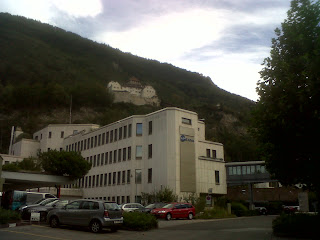Amsterdam is built on a large scale in the golden era (1585 - 1672) of the results of foreign trade. Some important buildings are established in this era include the Westerkerk, Zuiderkerk, De Gecroonde Raep, and much more. Among his trade to reap huge guilders was made by VOC, including the trade of spices from Indonesia. No exaggeration to say that Amsterdam is built with the wealth archipelago. After Indonesian independence, the Dutch colonization of Indonesia ended, Amsterdam practically not much else to do development.
Amsterdam is also known as the town museum. Hundreds of museums can be found there, all well maintained and visited by millions of tourists each year, such as the maritime museum, amsterdam museum, sex museum, and much more.
And there is also a region known as the Old Center (old town) is a center of tourism as well as here include areas called red light district. Although the name is quite frightening and if in another city usually shunned by people, the red light district in Amsterdam became one of the icons and the main destination for tourists. Prostitution is prohibited in many countries it became legal and the country's main revenue because customers must pay substantial taxes to the state.
To go to the red light district in Amsterdam is actually not too difficult. Its location in southern Amsterdam Central Station and the east of Damrak street. Out of the station to the left, then cross over and trace the Damrak street. There are canal path on the left, trace to find the turnoff to the left. Well start here let instinct take you, just follow the crowd of people here to Zeedijk road. Area that consists of several blocks and split the canal began in the afternoon at 5pm to 3-4am in the earliest morning.
Are common people and the streets come to see it through the full area of the red windows. There is absolutely no need to fear or danger disturbed criminals because the police (although not visible) just in full. Which certainly do not try to take photos desperate towards the sex workers, some reports on the Internet said the cameras can be taken away and destroyed. This area also contained some Sexshop, peep shows, bars, up to 24-hour restaurant.
And do not be surprised if you smell the aroma of cannabis everywhere, because in this country cannabis is legal to record usage and also follow the rules of law applicable ..wah wah woow... are you curious?
of course you are interested and want to visit this city is not it? if by good planning and maybe you will need info about amsterdam, please click here for more info





























+van+IMG-20120913-00297.jpg)



































